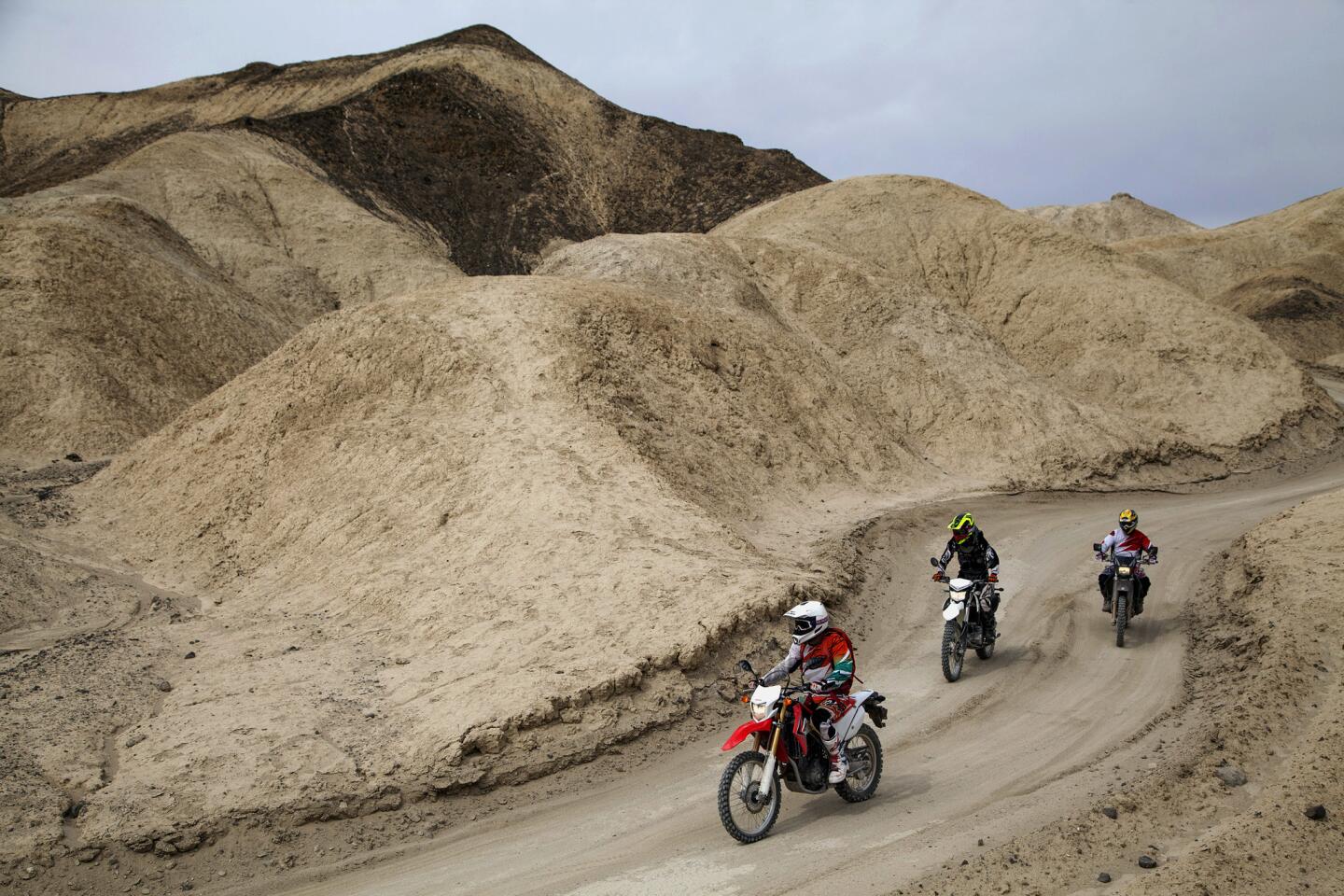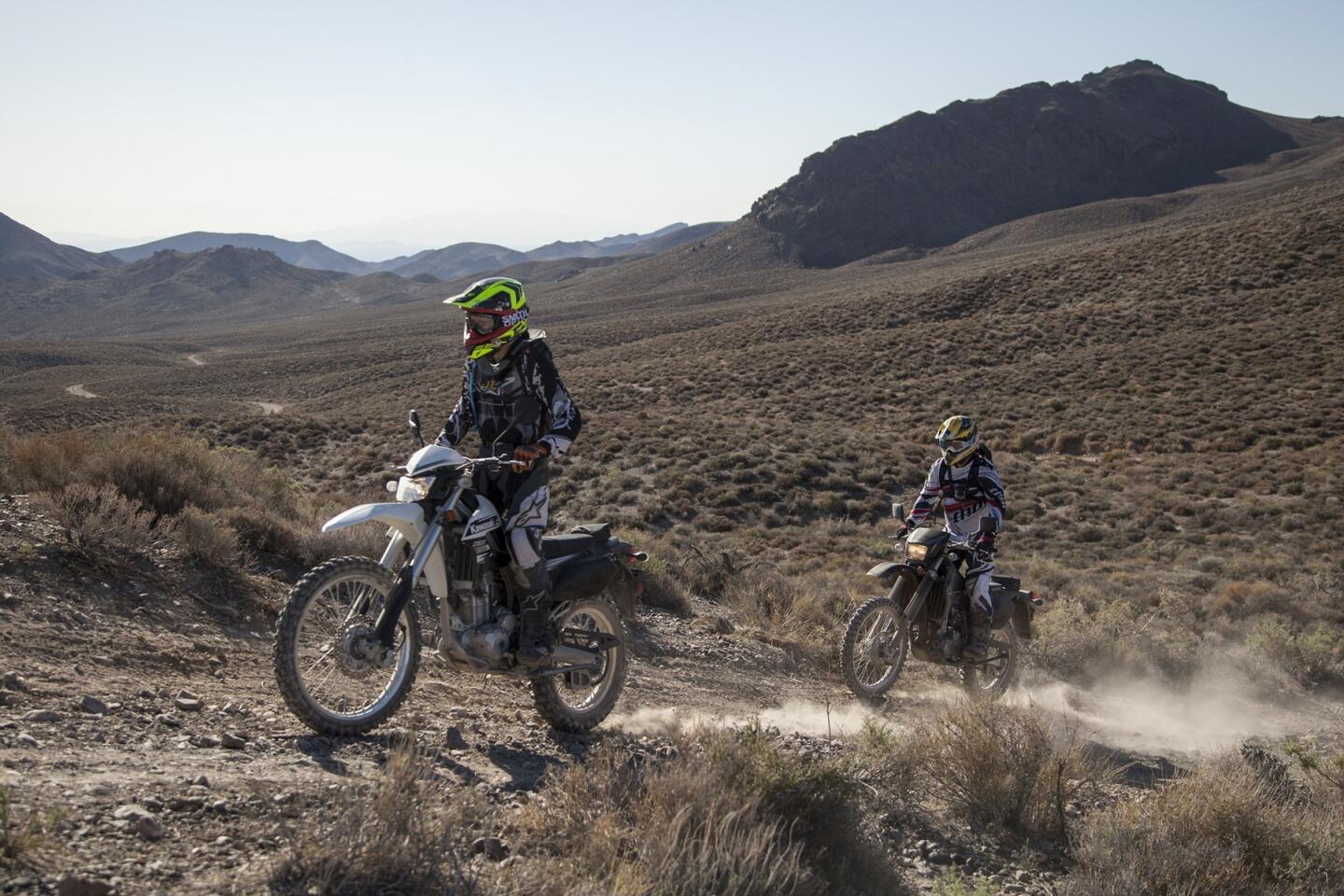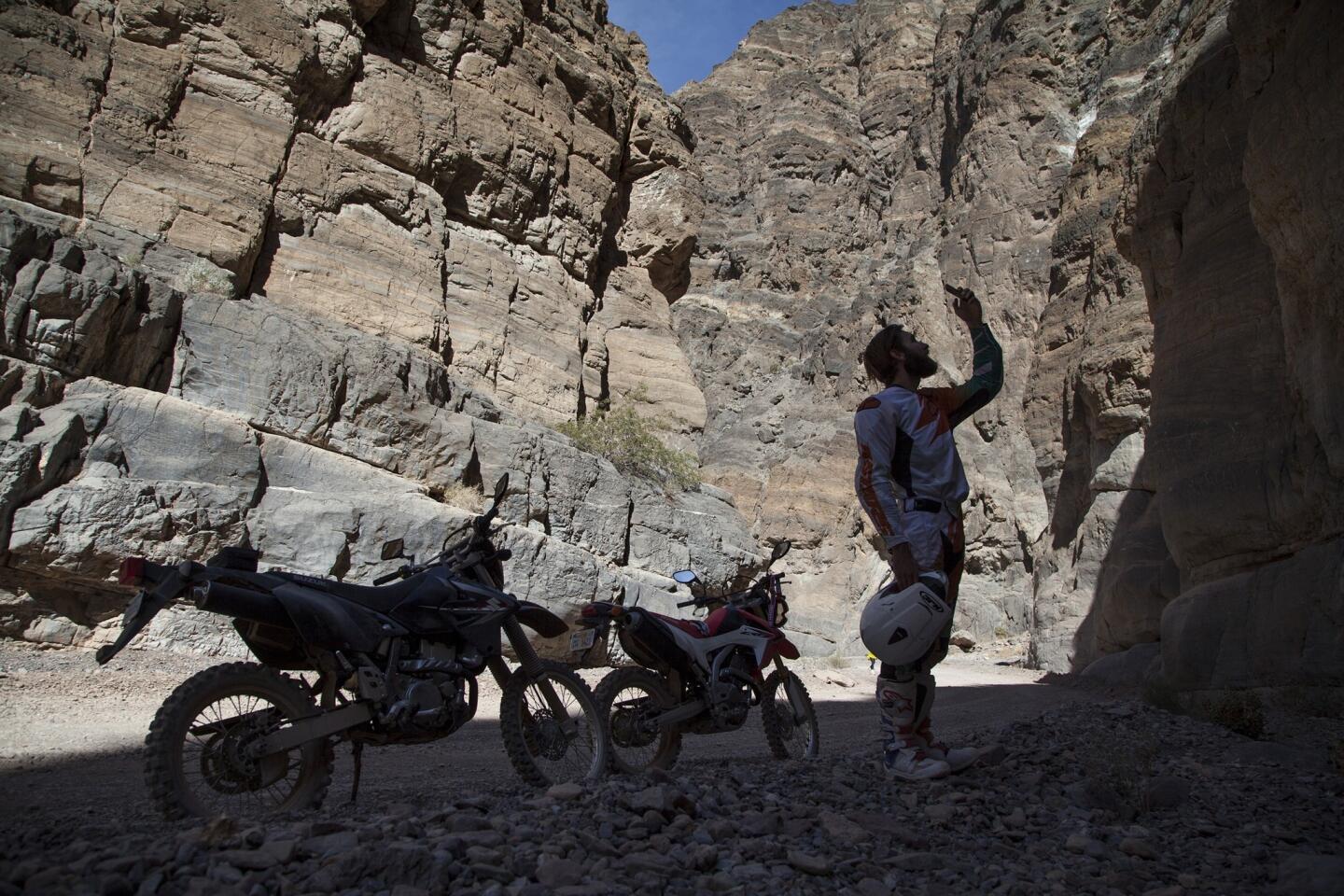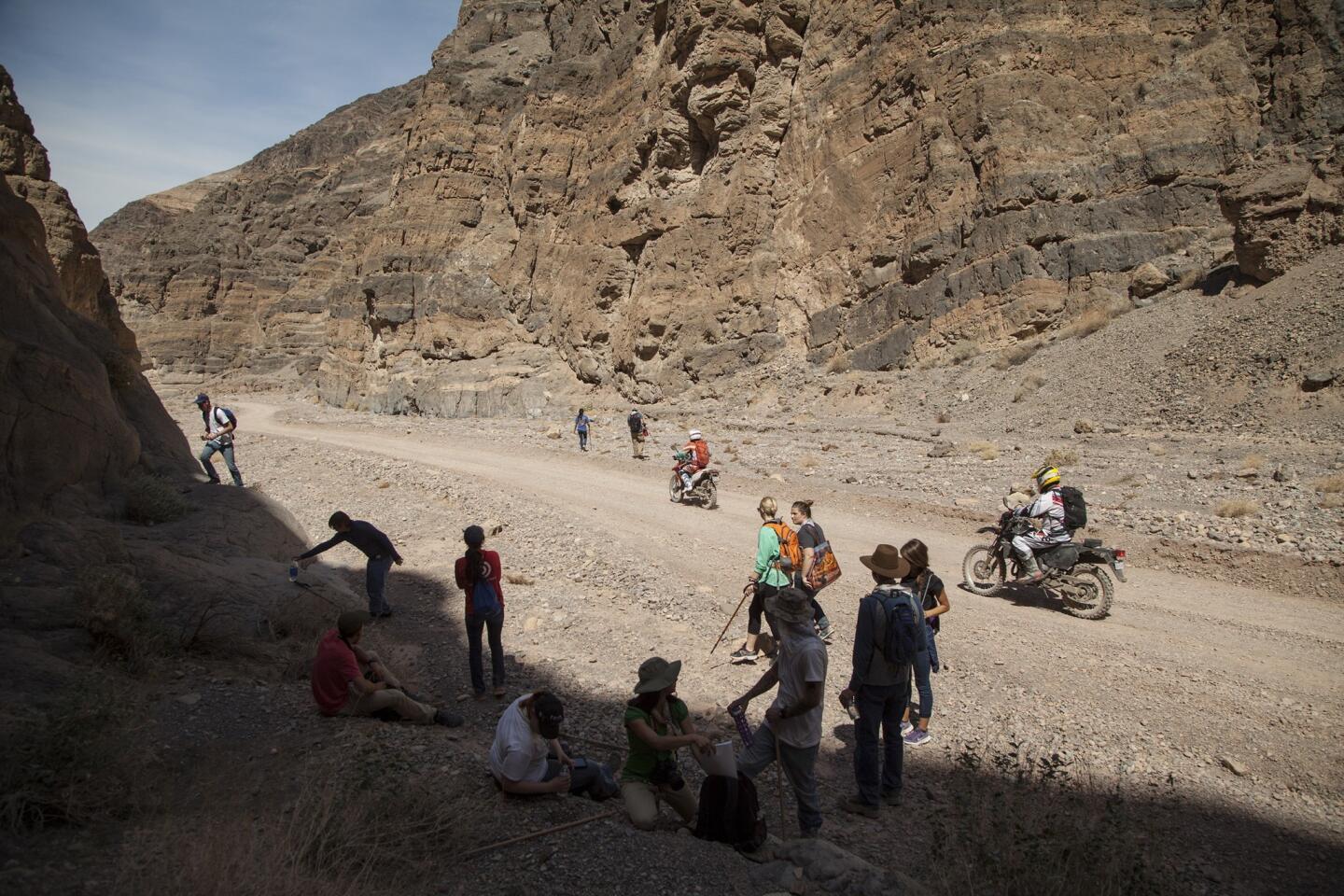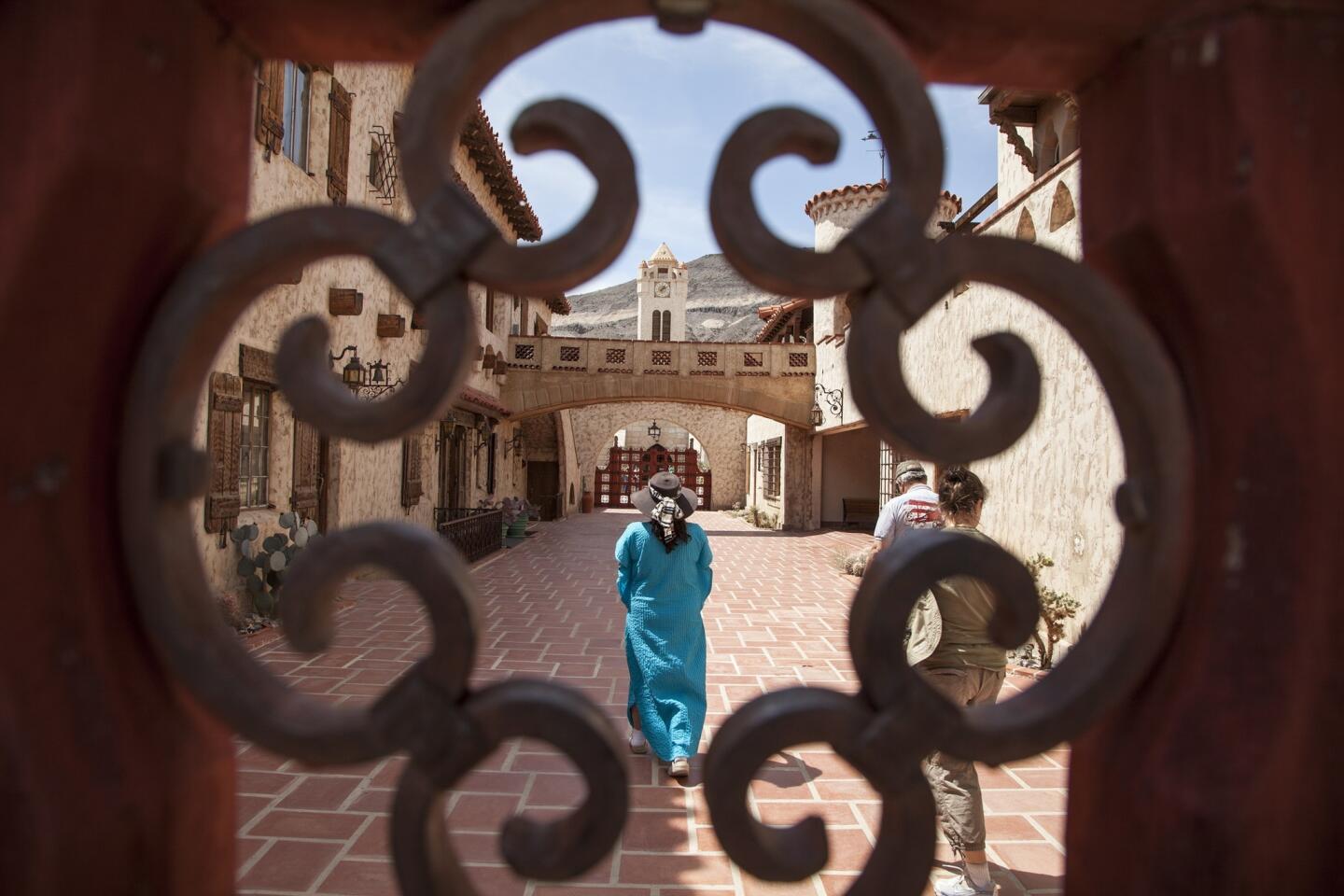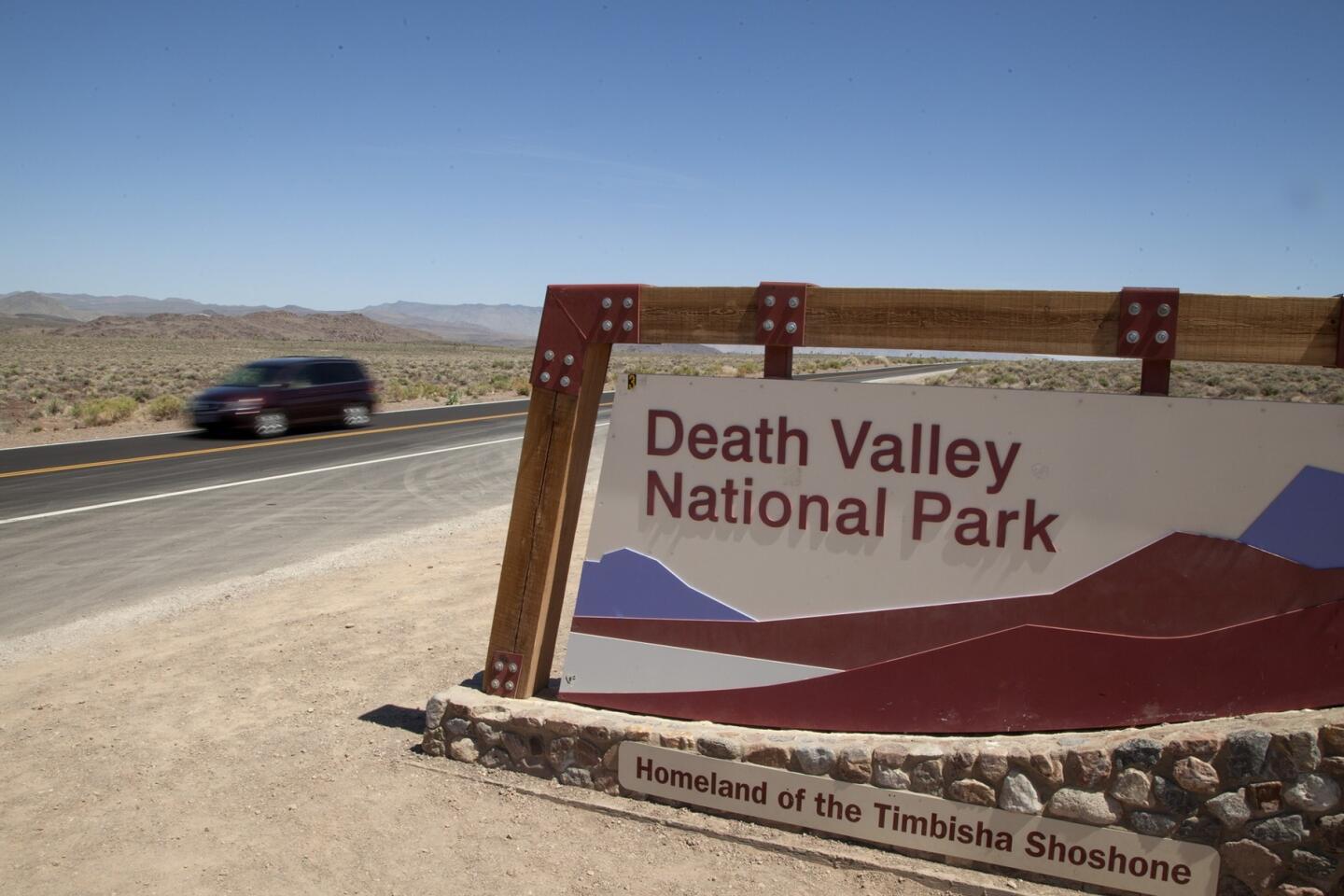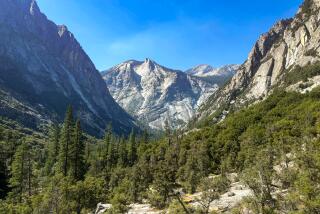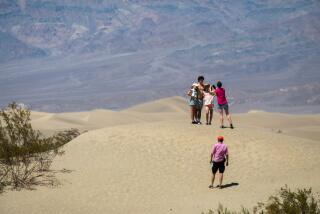Zip off the beaten path in Death Valley National Park on a motorcycle
- Share via
Reporting from Death Valley National Park — Shaped by millenniums of wind and water, this vast geological museum, 3,000 square miles of wildly varied topography, rivals the wonders of the Grand Canyon.
Much of Death Valley has been made accessible to visitors. The painted desert splendors of Zabriskie Point and the breathtaking scenic overlook at Dante’s View are less than a one-minute walk from the parking lot.
But much of what’s most interesting about Death Valley is hidden from view and difficult to access.
The best way to see the best of it — the fastest and easiest way, without spending hours crawling down bumpy roads in a car or four-wheel-drive truck — is on a dual-sport motorcycle, one suited for both on- and off-road riding.
Two friends and I took three lightweight, mid-sized motorbikes— a Honda 250L, a Kawasaki KLX250 and a Suzuki DR-Z 400 — designed to be as comfortable at 60 mph on the highway as they are capable of navigating ruts, rocks and ditches on the rough back roads.
We were kitted out for off-road safety — full-coverage helmets and goggles, proper boots and gloves, and clothing equipped with armored pads for knees, shins and elbows — and were wearing hydration packs to fight thirst in the dry air and warm weather.
From a base camp in nearby Beatty, Nev. — less chic but far cheaper than Death Valley’s glamorous Furnace Creek Inn — we spent two days in April two-wheeling around the enormous park’s highlights.
We hit all the marquee locations, including those we could easily have seen from a car, stopping at Stovepipe Wells for lunch, Furnace Creek for gas and Scotty’s Castle for a cold drink. But the real wonders of the weekend were off the beaten, and paved, path.
Behind the massive volcanic cavity that is Ubehebe Crater begin 29 miles of unpaved road to Racetrack Valley. This geologic mystery features a miles-wide expanse of pancake-flat clay so slick when it is wet or frozen that the stones on this desolate playa are pushed across it by seasonal winds. The result is a vast dry plain crisscrossed by the trails of rocks that appear to have raced there.
We passed many a Jeep and four-wheeler as they crept along the bad road. We skipped along on the bikes and did in 40 minutes a drive that might have taken some of them three hours.
It wasn’t without incident. One of our number, who might have been going a little too fast, got a little sideways and went head over heels off the motorcycle near Teakettle Junction — uninjured but amply demonstrating the wisdom of wearing off-road protective clothing.
The final highlight of the weekend was Titus Canyon. Beginning in Nevada and running through the mountains that separate the old mining-era towns of Beatty and Rhyolite from Death Valley itself, this unpaved, 27-mile, one-way roadway crosses open desert, climbs a series of switchbacks to a crest of 5,700 feet, and then makes a snaking, sinuous descent through a sandstone canyon.
Along the way it cuts through red rock mountains, where the road is a slim strip of flat land paralleling a deep canyon. At the roadside are abandoned homesteads and the ruins of the town Leadfield, where for one mad year in the 1920s prospectors came to make their fortunes after a promoter salted nearby mines with lead ore that promised riches.
Farther below, the road flattens into a dry, sandy wash, cutting through pink, purple and gold sandstone walls that are too narrow in places for a large vehicle to pass.
Like the road to the racetrack, this 20-mile-plus run of dirt road could be done in a car — though only four-wheel-drive vehicles are recommended — but its rocky, rutted sections and sandy washes make for slow going. Cars and Jeeps take up to three hours to do this drive. On a dual-sport motorcycle, a leisurely sightseeing spin could take less than an hour, leaving more time to stop for photographs or a short hike around Leadfield.
More to Read
Sign up for The Wild
We’ll help you find the best places to hike, bike and run, as well as the perfect silent spots for meditation and yoga.
You may occasionally receive promotional content from the Los Angeles Times.
